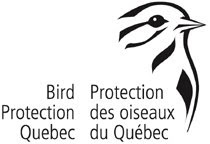Field Trip Report, 5:30 am: southwestern Quebec
It was the grand finale to the regularly scheduled field trip season as 18 birders met at 5:30 a.m. for the third annual summer solstice field trip (the second to southwestern Quebec). The only "complaint" received was that, with the sun already up at 5:30, we could have started earlier!
At 5:40 we set out and in the next 8 hours and 30 minutes we covered about 80 kilometers with frequent stops to enjoy the widely varied habitat available in this wonderful birding area. Only a couple of the roads we took are well traveled, so for the most part parking was easy and the birding on foot undisturbed by passing vehicles.
The temperature was 15 degrees Celsius at 5:30 and reached 30 degrees C. by the end of the trip after 2:00 p.m.. The rain stayed off until everyone was on the way home.
The Bird of the Trip was Upland Sandpiper with the following species as runners-up: Scarlet Tanager, Bobolink, Northern Harrier, and Grasshopper Sparrow.
There were many highlights. The single most breathtaking moment (literally) was to watch a Merlin fly in to a nearby tree and take a Cedar Waxwing.
Happily, we were lucky with Upland Sandpipers. At the first site, we had a pair perched on fence posts and in flight, with one making that haunting call.
The Grasshopper Sparrow on Montée Jameson was eventually co-operative as it perched on a wire and threw its head back in song.
Field Sparrows remained elusive though we heard four.
Eastern Meadowlarks and Bobolinks were plentiful and seen well on numerous occasions.
It was nice to hear a Willow Flycatcher, a bird many had hardly encountered this season.
The pair of Northern Harriers on Montée Biggar gave quite a show, interacting briefly in flight.
The Bank Swallow (aka Sand Martin) colony in the far southwest was a surprise . . with many nest holes in the walls of a sandpit.
The Eastern Bluebirds were seen at some distance through telescopes.
Among the breeding bird evidence in this first year of the atlas we had the following: a pair of American Kestrels; an Eastern Phoebe feeding young; a Red-eyed Vireo on the nest (about 2 feet off the ground in a conifer); and a Common Yellowthroat carrying food.
The list of observed birds ncludes 77 species.
The smaller totals for individual birds are reliable; the higher the number of individuals seen, the more the figure is a guesstimate at best.
Thanks to everyone who came out and made this special trip even more special.
Thanks so much to Wayne for co-leading.
A special thanks goes to Mark for his magnificent effort in bringing birders without transport.
To those who had to leave before the end of the trip, if I've missed any species, please let me know.
Martin
Species List (77):
Canada Goose 6; Mallard 2; Great Blue Heron 4; Great Egret 1; Green Heron 1; Turkey Vulture 12; Northern Harrier 2; Red-shouldered Hawk 1; Red-tailed Hawk 2; American Kestrel 5; Merlin 1; Killdeer 12; Upland Sandpiper 4; Ring-billed Gull 50; Rock Pigeon 24; Mourning Dove 28; Chimney Swift 7; Belted Kingfisher 1; Yellow-bellied Sapsucker 6; Downy Woodpecker 6; Northern Flicker 4; Pileated Woodpecker 1; Eastern Wood-Pewee 4; Alder Flycatcher 12; Willow Flycatcher 1; Least Flycatcher 30; Eastern Phoebe 6; Great Crested Flycatcher 5; Eastern Kingbird 8; Warbling Vireo 6; Red-eyed Vireo 10; Blue Jay 6; American Crow 24; Horned Lark 3; Tree Swallow 10; Bank Swallow 75; Cliff Swallow 1; Barn Swallow 25; Black-capped Chickadee 6; White-breasted Nuthatch 2; House Wren 7; Eastern Bluebird 3; Veery 12; Wood Thrush 6; American Robin 15; Gray Catbird 2; Brown Thrasher 1; European Starling 60; Cedar Waxwing 30; Yellow Warbler 10; Chestnut-sided Warbler 4; Black-throated Green Warbler 2; Bay-breasted Warbler 1; Black-and-White Warbler 5; American Redstart 2; Ovenbird 15; Northern Waterthrush 3; Common Yellowthroat 12; Scarlet Tanager 6; Eastern Towhee 3; Chipping Sparrow 10; Field Sparrow 4; Savannah Sparrow 10; Grasshopper Sparrow 1; Song Sparrow 15; Swamp Sparrow 3; White-throated Sparrow 5; Rose-breasted Grosbeak 2; Indigo Bunting 2; Bobolink 40; Red-winged Blackbird 50; Eastern Meadowlark 12; Common Grackle 20; Brown-headed Cowbird 12; Baltimore Oriole 6; American Goldfinch 20; House Sparrow 20
Sunday, June 20, 2010
Subscribe to:
Post Comments (Atom)





No comments:
Post a Comment